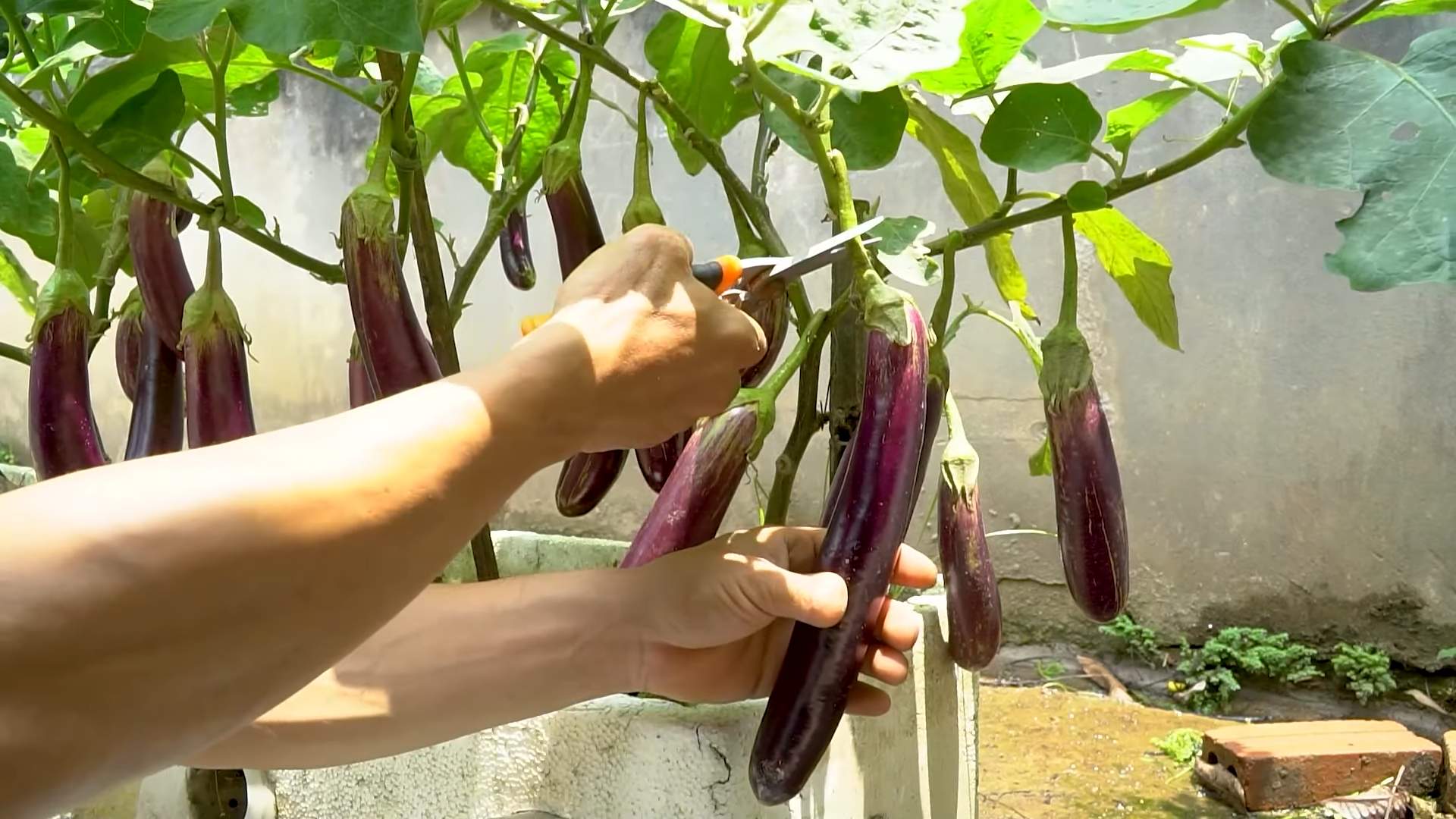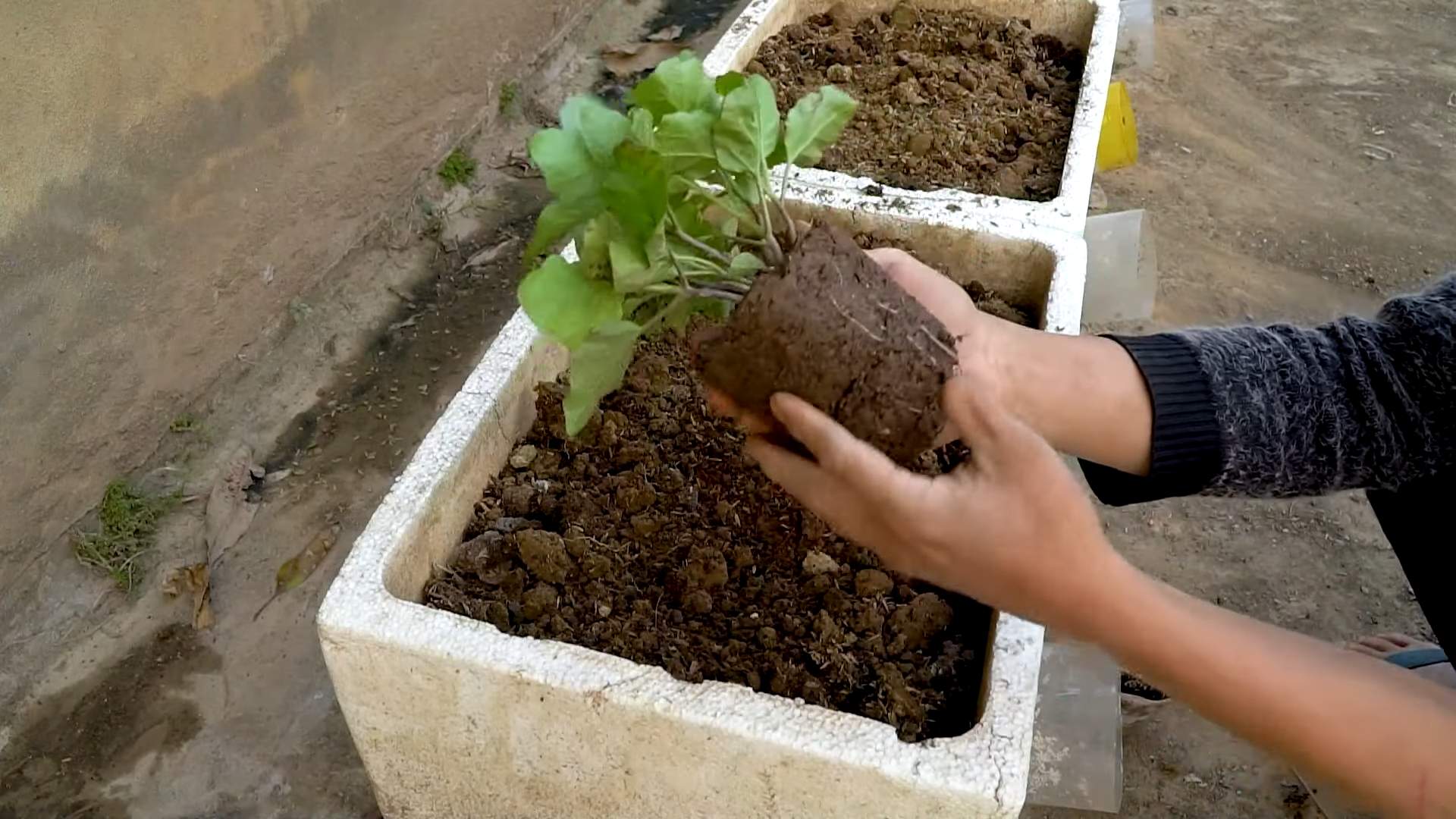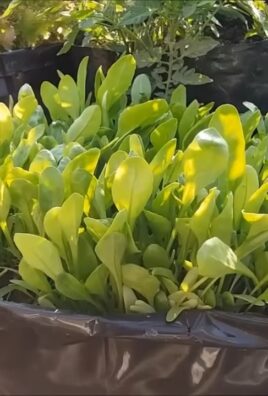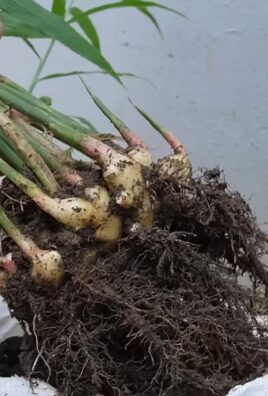Grow Eggplant Easily: Your Guide to a Bountiful Harvest
Growing eggplant easily might seem like a daunting task, but I’m here to tell you it’s absolutely achievable! This article is your passport to a flourishing eggplant patch, brimming with plump, delicious fruits. Forget the frustrating struggles of wilting plants and meager yields; I’ll share my tried-and-true Grow Eggplant Easily techniques, transforming your gardening experience from challenging to rewarding.
For centuries, eggplants have held a significant place in cuisines worldwide, from the vibrant dishes of India to the classic Italian ratatouille. Their rich history, interwoven with culinary traditions across cultures, makes growing your own a truly satisfying endeavor. It’s more than just harvesting vegetables; it’s connecting with a legacy of food production and enjoying the freshest, most flavorful eggplant you’ve ever tasted.
Why You Need These Grow Eggplant Easily Tips
Let’s face it: nothing beats the taste of homegrown produce. Store-bought eggplants often lack the intense flavor and vibrant color of those grown with love and care in your own garden. Plus, knowing exactly what went into growing your food – from seed to plate – offers a level of satisfaction that’s hard to match. These Grow Eggplant Easily tips will empower you to overcome common challenges, ensuring a successful harvest and a table filled with delicious, homegrown eggplant.
Whether you’re a seasoned gardener or just starting out, this guide is packed with practical advice, simple DIY solutions, and expert tips to help you grow eggplant easily. Get ready to transform your garden into a purple paradise!

Grow Eggplant Easily: A Step-by-Step Guide
Eggplants, with their glossy skin and versatile culinary uses, are a rewarding vegetable to grow. But getting a bountiful harvest requires a bit of know-how. Follow these steps, and you’ll be enjoying homegrown eggplants in no time!
Phase 1: Planning and Preparation
- Choose the right variety: Research eggplant varieties suited to your climate and growing season. Consider factors like size, color, and disease resistance. Some varieties are better for container gardening than others.
- Select a sunny spot: Eggplants need at least six to eight hours of direct sunlight daily. Find a location in your garden that receives ample sun throughout the day. A south-facing location (in the Northern Hemisphere) is ideal.
- Prepare the soil: Eggplants thrive in well-drained, fertile soil. Amend heavy clay soil with compost or other organic matter to improve drainage and aeration. Conduct a soil test to determine its pH level; eggplants prefer slightly acidic soil (pH 6.0-6.8).
- Gather your supplies: You’ll need eggplant seeds or seedlings, potting mix (if starting seeds indoors), garden gloves, a trowel or spade, watering can, and fertilizer (optional, but recommended).
Phase 2: Starting Seeds (Optional)
- Start seeds indoors (6-8 weeks before last frost): If you’re starting from seed, sow them in seed-starting trays filled with a well-draining seed-starting mix. Plant seeds about ½ inch deep and space them appropriately.
- Provide warmth and moisture: Keep the soil consistently moist but not soggy. Maintain a warm temperature (around 70-80°F) using a heat mat if necessary. Good air circulation is crucial to prevent damping-off disease.
- Thin seedlings: Once seedlings have developed their first true leaves, thin them to one strong seedling per cell. This gives each plant enough space to grow.
- Harden off seedlings: Before transplanting outdoors, gradually acclimate your seedlings to outdoor conditions. Start by placing them outside for a few hours each day, gradually increasing the exposure time over several days.
Phase 3: Transplanting and Planting
- Prepare planting holes: Dig holes twice as wide as the root ball of your seedlings or slightly larger than the size of the container if using seedlings. Space plants 18-24 inches apart to allow for adequate growth.
- Transplant seedlings: Gently remove seedlings from their containers, being careful not to damage the roots. Plant them at the same depth they were growing in their containers. Fill in the holes with soil and gently firm the soil around the base of the plants.
- Water thoroughly: After transplanting, water deeply to settle the soil and help the plants establish themselves. Use a gentle stream of water to avoid dislodging the seedlings.
- Mulch (optional but recommended): Apply a layer of mulch around the plants to help retain moisture, suppress weeds, and regulate soil temperature. Organic mulches like straw or shredded leaves are ideal.
Phase 4: Ongoing Care
- Water regularly: Eggplants need consistent moisture, especially during hot and dry periods. Water deeply and regularly, aiming to keep the soil consistently moist but not waterlogged. Water at the base of the plants to avoid wetting the foliage, which can increase the risk of fungal diseases.
- Fertilize (optional but recommended): Feed your eggplants with a balanced fertilizer every 2-3 weeks. Follow the instructions on the fertilizer package for application rates. Organic fertilizers are a good choice for promoting healthy growth.
- Support plants (if necessary): Some eggplant varieties may require staking or caging to support their weight, especially when they are heavily laden with fruit. Use stakes or cages to prevent the plants from bending or breaking.
- Pest and disease control: Regularly inspect your plants for pests and diseases. Address any problems promptly using appropriate methods, such as handpicking pests or applying organic pest control solutions. Good air circulation can help prevent fungal diseases.
- Harvesting: Eggplants are ready for harvest when they are firm, glossy, and have reached their mature size and color. Harvest them regularly to encourage continued production. Use a sharp knife or pruning shears to cut the eggplants from the plant, leaving a short stem attached.
Phase 5: Troubleshooting
Common Problems and Solutions
- Blossom drop: This can be caused by inconsistent watering, temperature fluctuations, or nutrient deficiencies. Ensure consistent watering, maintain a stable temperature, and fertilize regularly.
- Fruit cracking: Inconsistent watering can lead to fruit cracking. Maintain consistent soil moisture. Also, avoid over-fertilizing with nitrogen.
- Pests: Common pests include aphids, flea beetles, and spider mites. Use insecticidal soap or neem oil to control pests. Consider using row covers to protect plants from flea beetles.
- Diseases: Fungal diseases like verticillium wilt and bacterial wilt can affect eggplants. Ensure good air circulation, avoid overhead watering, and practice crop rotation to minimize disease risk. Remove and destroy infected plants.
Remember:
Patience and consistent care are key to a successful eggplant harvest. Don’t be discouraged if you encounter some challenges along the way. Learn from your experiences, and you’ll become a more confident and successful gardener.

Conclusion
So there you have it! A comprehensive guide to growing your own eggplants, proving that this seemingly challenging vegetable is surprisingly easy to cultivate at home. This DIY approach to eggplant cultivation offers a rewarding experience, connecting you directly with the source of your food and providing a sense of accomplishment that store-bought produce simply can’t match. The ease and satisfaction of growing your own eggplants far outweighs any perceived difficulty. You’ll be amazed at the flavor difference between homegrown and store-bought eggplants – a richer, more intense taste that will elevate your culinary creations. This method, focusing on optimal soil conditions, proper sunlight exposure, and consistent watering, ensures a bountiful harvest of delicious, healthy eggplants. It’s a truly rewarding experience for both novice and experienced gardeners alike.
Beyond the basic method outlined, there are numerous ways to personalize your eggplant growing journey. Experiment with different eggplant varieties – from the classic globe eggplant to the long, slender Japanese eggplants. Consider companion planting, incorporating herbs like basil or marigolds to deter pests and improve soil health. If you have limited space, vertical gardening techniques, such as using trellises or hanging baskets, can maximize your yield. For those with less sunlight, explore the option of grow lights to supplement natural light, especially during the early stages of growth. Don’t be afraid to get creative and adapt the techniques to your specific environment and preferences. The beauty of this DIY approach is its flexibility and adaptability.
We strongly encourage you to try this simple yet effective method of growing eggplants. Share your experiences with us! Post pictures of your thriving eggplant plants and your delicious culinary creations on social media using #GrowEggplantEasily. We’d love to see your success stories and learn from your experiences. Let’s build a community of home gardeners, sharing tips, tricks, and the joy of harvesting our own homegrown produce. Remember, even a small balcony or window box can be transformed into a productive eggplant patch. The rewards of fresh, homegrown eggplants are well worth the effort, and the satisfaction is immeasurable. So, grab some seeds, prepare your soil, and embark on this rewarding gardening adventure. You might be surprised at just how easy it is to grow eggplant easily!
Frequently Asked Questions
Q: What type of soil is best for growing eggplants?
Eggplants thrive in well-draining, fertile soil with a slightly acidic pH level (between 6.0 and 6.8). Amend heavy clay soils with compost or other organic matter to improve drainage and aeration. Sandy soils may benefit from the addition of peat moss or other organic materials to increase water retention.
Q: How much sunlight do eggplants need?
Eggplants are sun-worshippers! They require at least six to eight hours of direct sunlight per day to produce a healthy crop. Choose a location in your garden that receives ample sunlight throughout the day. If you have limited sunlight, consider using grow lights to supplement natural light, especially during the early stages of growth.
Q: How often should I water my eggplants?
Consistent watering is crucial for healthy eggplant growth. Water deeply and regularly, especially during hot and dry periods. Aim to keep the soil consistently moist but not waterlogged. Overwatering can lead to root rot, while underwatering can result in stunted growth and reduced yields. Mulching around the plants can help retain soil moisture and suppress weeds.
Q: What are some common pests and diseases that affect eggplants?
Eggplants can be susceptible to various pests and diseases, including flea beetles, aphids, spider mites, and blossom-end rot. Regularly inspect your plants for signs of infestation or disease. Use organic pest control methods, such as insecticidal soap or neem oil, to address pest problems. Proper watering and soil drainage can help prevent blossom-end rot.
Q: When can I harvest my eggplants?
Eggplants are typically ready for harvest when they are firm, glossy, and have reached their mature size and color for the specific variety. Harvesting eggplants regularly encourages continued production. Use a sharp knife or pruning shears to cut the eggplants from the plant, leaving a short stem attached.
Q: Can I grow eggplants in containers?
Absolutely! Eggplants can be successfully grown in large containers, provided they receive adequate sunlight and are watered regularly. Choose containers that are at least 12 inches in diameter and depth to allow for sufficient root development. Use a well-draining potting mix and ensure the containers have drainage holes to prevent waterlogging.
Q: What should I do with my harvested eggplants?
Freshly harvested eggplants are best enjoyed soon after picking. Store them in the refrigerator in a plastic bag for up to a week. Eggplants can also be used in a variety of dishes, from grilling and roasting to stir-fries and curries. Their versatility makes them a welcome addition to any kitchen.
Q: What if my eggplants aren’t producing fruit?
Several factors can affect eggplant fruit production. Insufficient sunlight, improper watering, nutrient deficiencies, or pest infestations can all contribute to poor yields. Review the growing conditions and address any potential issues. Ensure your plants are receiving adequate sunlight, water, and nutrients. Consider using a balanced fertilizer to supplement soil nutrients. Regularly inspect your plants for pests and diseases and take appropriate action if necessary.




Leave a Comment